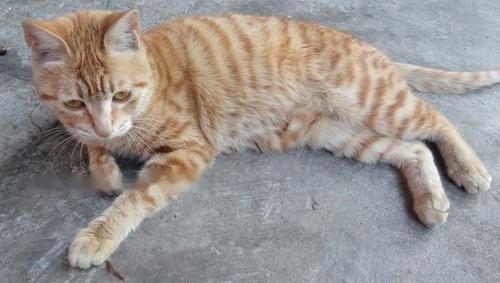Parents should also know about cat health when raising cats, because this will be more conducive to the growth of cats. When cats encounter diseases, they will not know how to deal with them. The symptoms of some common diseases and disease outbreaks in daily life are also what we need to know as qualified parents. The following editor will also introduce a common infectious disease of cats in life. Parents can take preventive measures in advance when Jiandong has this disease.

Symptoms of Feline Viral Rhinotracheitis
The virus grows primarily The affected parts are nose, sinuses, eyes, palate, tongue, throat, tonsils and upper trachea. The cat will have severe sneezing symptoms 1 to 3 days after being infected, and then gradually become inactive, have a fever, have a severe loss of appetite, and even stop eating. The same, and then gradually the nasal water becomes thicker and thicker like snot; tearing, the conjunctiva (ie the white of the eye) becomes red and swollen, and the eyes are so swollen that the eyes cannot be opened. Some cats will also experience corneal ulceration; some cats will appear Drooling, sores in the mouth; coughing and even pneumonia as the disease progresses. These symptoms usually last 7 to 14 days. The severity of the symptoms is usually related to the number of viruses infecting the cat. The more the number, the more obvious and severe the symptoms. In addition, it is also related to the following factors: The younger or older the cat is, the more vulnerable it is to being attacked by the virus, and the more serious the disease is; the better the nutrition, the better the resistance, the stronger the ability to fight against the virus; the stress, the cat in a state of stress resists The strength of the cat will decrease, so it is necessary to give the sick cat a quiet and comfortable environment; when other diseases are complicated, the resistance to the virus will be relatively weak when the cat suffers from other diseases at the same time, so the symptoms will be more serious.
Prevention and treatment of feline viral rhinotracheitis
There is no specific drug to treat feline viral rhinotracheitis, so the mortality rate of cats with this disease is very high. High, but some cats recover with treatment. The current principles of treatment are mainly symptomatic treatment to prevent secondary infection and some resistance-increasing therapies. It is very important to give the cat good care during the treatment process. Keep the cat's eyes and nose clean, and provide the cat with nutritious food and clean drinking water. Even if the cat does not take the initiative to eat and drink, you must find a way to feed it to ensure that It has enough physical strength to fight the virus. The place where the cat lives should be well ventilated and disinfected frequently. If the weather is cold, the cat should be kept warm, etc.
But as the saying goes prevention is better than cure, feline viral rhinotracheitis can be prevented by injecting cat triple vaccine, which is also the safest and most effective way to prevent this disease. In addition, the place where the cat lives should have a good ventilation environment, and the utensils used by the cat should be disinfected regularly. If the place is not big enough, try not to keep too many cats. When suspicious cats are found, they should be isolated and disinfected in time. , to prevent contact transmission, and usually feed cats nutrient-rich food to enhance their ability to resist viruses.
![[Dog Training 5] The training method of pet dog dining etiquette](/static/img/12192/12192_1.jpg)




